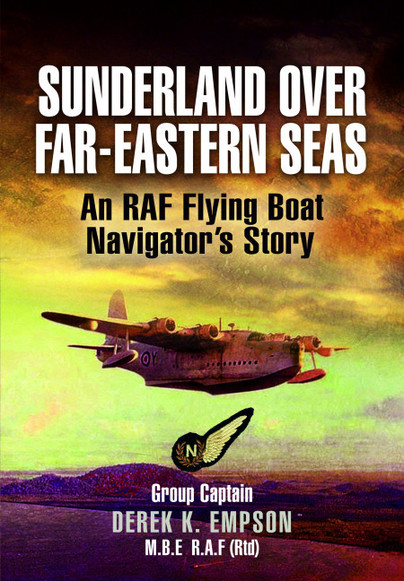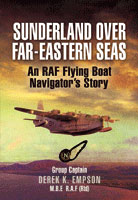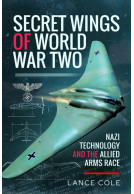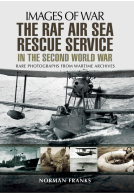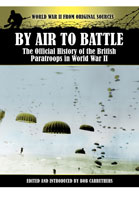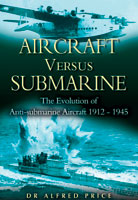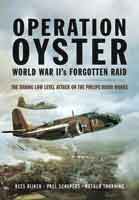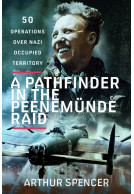Sunderland Over Far-Eastern Seas (Paperback)
An RAF Flying Boat Navigator's Story
Imprint: Pen & Sword Aviation
Pages: 288
Illustrations: Black and white images and maps
ISBN: 9781399085106
Published: 24th January 2022
(click here for international delivery rates)
Need a currency converter? Check XE.com for live rates
| Other formats available | Price |
|---|---|
| Sunderland Over Far-Eastern Seas Hardback Add to Basket | £25.00 |
| Sunderland Over Far-Eastern Seas ePub (8.1 MB) Add to Basket | £6.99 |
This is the first book to give a detailed, first-hand account of post-World War II RAF Short Sunderland operations in the Far East. The author was a navigator with 88 Squadron and later 205 Squadron, flying operations during the Korean War, the Malayan Emergency and many other operations. He was based at Seletar in Singapore, Kaitak in Hong Kong, Iwakuni near Hiroshima and various other operational bases throughout his two and a half year tour.
The Sunderland flying boat was a unique aircraft in that each crew was allotted an aircraft which became their floating and airborne home. The author describes the Sunderland's performance and flying boat operating techniques, including taking-off from and landing on the open sea. It includes a tour of the aircraft's interior and the equipment used by the ten-man crew, all well illustrated by photographs. The task of long distance navigation in the Far East during the early 1950s relied on the conventional methods of astro navigation and dead reckoning, a difficult task when crossing hundreds of miles of open ocean and encountering monsoon and tropical storm conditions.
Amongst the noteworthy events included is a return flight from Singapore to Hong Kong across 1,400 miles of ocean with a VIP passenger, his first operational flight as a 21 year old Pilot Officer navigator. He then undertakes an operation involving a return trip to Scotland which took three months. On moving to Kaitak the Sunderlands provided air cover for search and rescue operations, taking off and landing amongst the port's many small
and erratically steered shipping craft. He flew sixty-one missions in support of the United Nations forces fighting in and around Korea, enduring the threat of Chinese fighters over the Yellow Sea. In one operation an engine fire caused the crew to ditch in the Tsushima Strait with serious structural failure and they were rescued by the USS De Haven, a US destroyer.
This is a worthy record of some of the legendary Short Sunderland's final roles in the RAF.
This is by far the best book on the Sunderland I have ever read.
Ray Williamson
This is an account of the author's first operational tour as an RAF navigator, posted onto Sunderland flying boats at RAF Seletar, Singapore, in the early Fifties. Written with easy-flowing clarity, yet well-researched and going into great detail, the book readily conveys the unique role of the Sunderland and the affection felt for it by its aircrew. It provides an excellent insight into how the aircrew operated their aircraft, how they interacted as a close-knit team, and the very high standards of both airmanship and seamanship required. The Far East was devoid of navigational aids and, with much of the flying over open sea, basic navigational skills were tested to the limit. Routine flights and operational sorties in support of the Korean War and the Malayan Emergency are all covered in depth. There are some interesting incidents: over eight hours towing a broken-down, ten-ton launch safely to shore; taking a Sunderland back to Scotland and bringing the replacement back to Singapore, a round trip of 84 days, 113 hours total flying time, caused by lots of bad weather and unserviceabilities; and a landing accident that wrote off the author's aircraft, leading to a rescue by the US Navy. With good descriptions of the many Far-Eastern operating bases visited, the book is very well illustrated with full-colour maps, cartoons and an abundance of historical photographs. There are in-depth, descriptive and analytical appendices on technical and navigation issues.
Pennant Magazine
A slice of history has been accurately recorded, albeit recently, but the book reads like a diary written at the time - and that makes it all the more interesting.
For almost exactly forty years, flying boats were a unique element of the front line of the Royal Air Force. This book is a very personal and well-illustrated account of the author’s time on Sunderland ‘boats’ in the Far East during the closing years of that era. It will appeal on several levels. First, that of the aviation historian, not least because these aircraft made up the only direct RAF contribution to the Allied air effort during the Korean War being fought at that time. Some amusement may be derived for the fact that during the concurrent Malayan ‘emergency’, Sunderlands were also engaged in carpet bombing the enemy in the jungle below, and it was quite normal to deliver 20-pounders by throwing them out of the aircraft’s side hatches!
ACM Sir Mike Armitage
At a professional level, present day navigators will no doubt be intrigued by the detailed explanations of the pre-GPS techniques used to transit distant waters, a feature that is here illustrated with some excellent coloured maps. For those with an interest in technical aspects of aircraft there is a fulsome performance appendix on the Sunderland, together with statistics and a set of remarkably clear colour photographs of the interior of the machine and of its navigation fit.
The more general reader will find intriguing the mix of airmanship skills and nautical expertise that had to be mastered by all members of a boats crew if the aircraft was to be operated safely, and the author is at pains to stress the camaraderie that was both the source and the outcome of these skills. Not surprisingly, the unique problems involved in launching and recovering Sunderlands, especially in marginal weather conditions, are given full coverage.
There are several diversions from the main theme, in which among other things we learn something of life on RAF Stations and detachments in the Far East in the 1950’s. We are given examples of the high level of cooperation between Allied forces in the Far Eastern theatre, notably with the French in Indo-China and with the Americans in Japan, Korean waters and the Philippines.
In summary, this is a very worthwhile read by an experienced professional aviator about a lttle-known aspect of past RAF activities. As is to be expected in so personal an account, there is throughout the whole account a powerful atmosphere of nostalgia about the Far East in general and about flying boats in particular, and by the end of the book one can see why.
We counted ourselves fortunate to be posted to flying boats in the Far East for our first operational flying tour. We soon collected territories and countries as we had formerly collected stamps! Hong Kong, Borneo, Malaya, Japan - names to conjure with. Our maps and charts soon dribbled more exotic names into our logbooks. China Bay, Lahad Datu, Kai Tak, Cat Lai.
Tony Burt (Seletar 1953 - 55)
The author shows both the romance of the job, and the responsibility that came with it. He explores and explains the tools and techniques that we Sunderland navigators employed and, in equal measure, the hazards and challenges presented to flying boat crews on the water and in the air! Not for us the modern instant read-out of earthly co-ordinates supplied by satellite Global Positioning Systems. We measured, calculated, observed and plotted our way around the Yellow Sea, the Bay of Bengal, the South China Sea and the other straits and seas we encountered.
Derek Empson's book describes his adventures and exposes the leadership and analytical skills that he possesses and which led him to later senior appointments. It is 56 years since we were colleagues at Seletar and 55 years that I have awaited this book. The author has done us proud!







